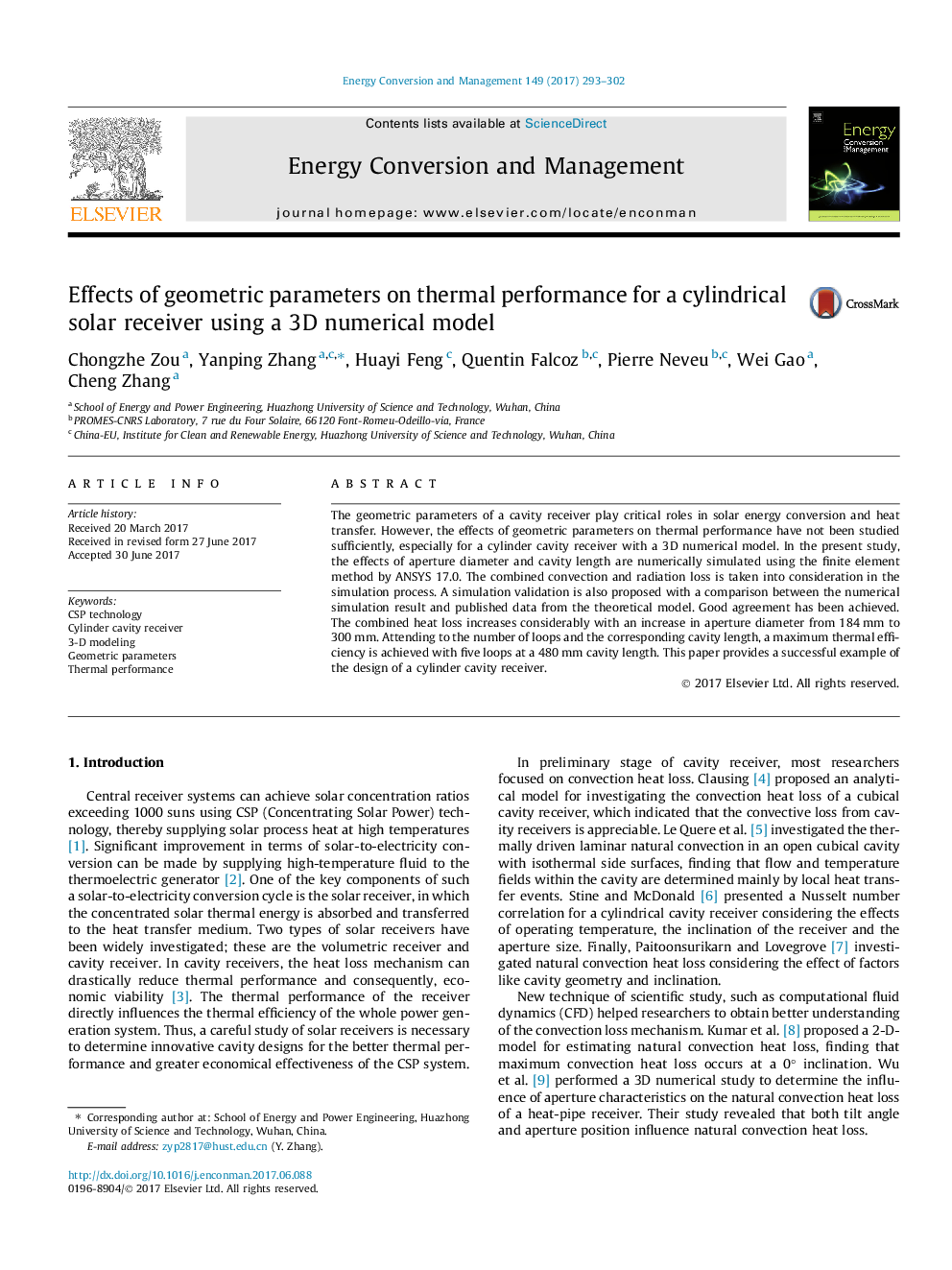| Article ID | Journal | Published Year | Pages | File Type |
|---|---|---|---|---|
| 5012425 | Energy Conversion and Management | 2017 | 10 Pages |
Abstract
The geometric parameters of a cavity receiver play critical roles in solar energy conversion and heat transfer. However, the effects of geometric parameters on thermal performance have not been studied sufficiently, especially for a cylinder cavity receiver with a 3D numerical model. In the present study, the effects of aperture diameter and cavity length are numerically simulated using the finite element method by ANSYS 17.0. The combined convection and radiation loss is taken into consideration in the simulation process. A simulation validation is also proposed with a comparison between the numerical simulation result and published data from the theoretical model. Good agreement has been achieved. The combined heat loss increases considerably with an increase in aperture diameter from 184Â mm to 300Â mm. Attending to the number of loops and the corresponding cavity length, a maximum thermal efficiency is achieved with five loops at a 480Â mm cavity length. This paper provides a successful example of the design of a cylinder cavity receiver.
Related Topics
Physical Sciences and Engineering
Energy
Energy (General)
Authors
Chongzhe Zou, Yanping Zhang, Huayi Feng, Quentin Falcoz, Pierre Neveu, Wei Gao, Cheng Zhang,
